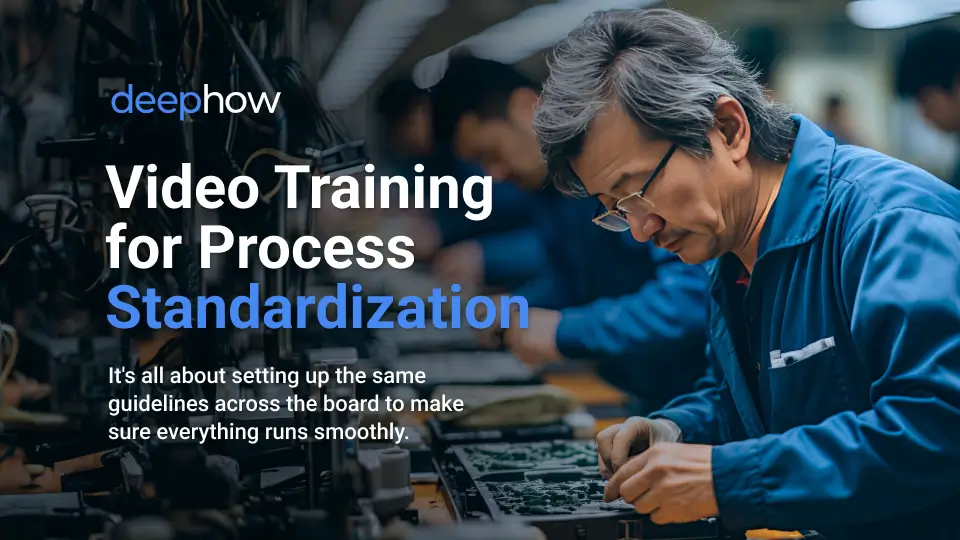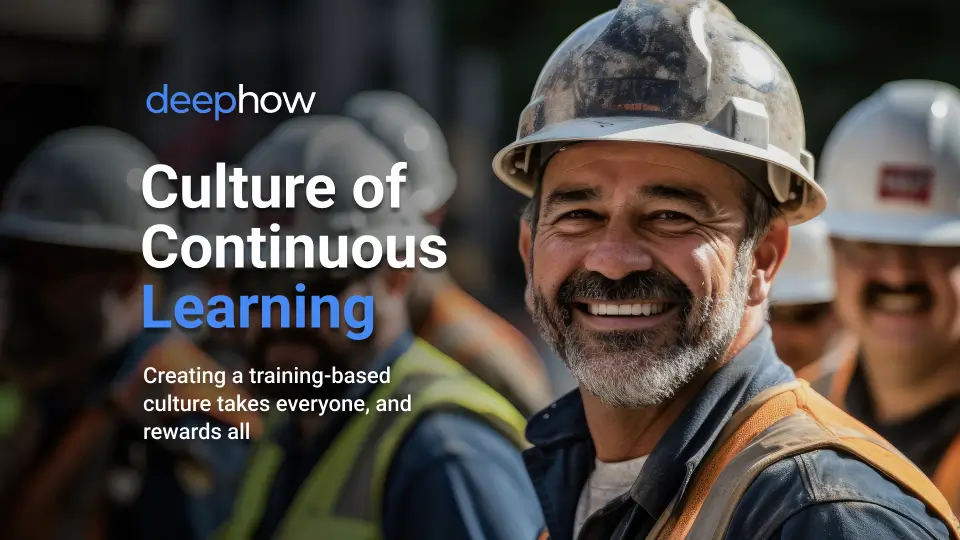
We all feel it: burnout has become a prevalent issue affecting employees across nearly all industries. Burnout not only takes a toll on an individual's mental and physical health but also impacts an organization's productivity and employee retention. Fortunately, technology has emerged as a powerful ally in the battle against burnout. With the right tools, technology can be harnessed to support workers and reduce burnout effectively.
Understanding Workforce Burnout
Before delving into the solutions, let's take a moment to understand what burnout is and why it is such a significant concern. Burnout is a state of physical, emotional, and mental exhaustion caused by prolonged periods of stress and overwork. It can manifest in various ways, including reduced productivity, increased absenteeism, and decreased job satisfaction. And burnout is on the rise - a recent report from Indeed found that 52% of all workers are already feeling burned out, up 9% from a pre-COVID survey.
The factors contributing to burnout are multifaceted and can include excessive workloads, a lack of work-life balance, and job-related stressors. The consequences of burnout extend beyond the individual, affecting the overall health of organizations through decreased employee engagement, higher turnover rates, and diminished company culture.
How Technology Can Help
Technology offers a range of solutions to address burnout and support workers in their quest for a healthier work-life balance. Here are some ways in which technology can make a difference:
- Technology-Enhanced Training
DeepHow’s AI-driven training platform is a key tool in preventing burnout by transforming the learning experience. Our interactive, step-by-step video tutorials make complex procedures easy to grasp, speeding up the skill acquisition process. This efficient learning method ensures consistent knowledge transfer and accommodates flexible learning schedules, crucial in industries where traditional, rigid training models can contribute to stress and burnout.
By making learning more accessible and engaging, DeepHow helps employees feel more competent and confident in their roles, which is essential in preventing feelings of overwhelm and job dissatisfaction. - Promoting Worker Well-Being and Safety
In environments where safety is paramount, DeepHow's platform is an indispensable tool. Clear, accessible instructional content significantly reduces workplace stress and uncertainty, which are common contributors to burnout.
By ensuring that workers are properly trained and familiar with safety protocols, DeepHow not only enhances workplace safety, but also boosts workers’ confidence and peace of mind. In industries where the risk of physical injury is high, knowing that they are well-prepared and safe can significantly alleviate anxiety and stress among employees, contributing to a healthier, more resilient workforce. - Collaborative Learning and Knowledge Sharing
DeepHow's platform revolutionizes the approach to industrial training by fostering a collaborative learning environment. This feature not only significantly empowers knowledge sharing but also plays a crucial role in combating worker burnout. When employees contribute their expertise and learn from peers, it creates a sense of community and purpose, key factors in reducing feelings of isolation and stress that often lead to burnout.
By empowering workers to create and share their own content, DeepHow helps in distributing the workload more evenly. This peer-to-peer approach alleviates the pressure on individual workers, as knowledge and expertise are shared across the team. It also offers a sense of achievement and recognition, boosting morale and engagement, which are essential in preventing burnout. Language barriers are also not a problem with DeepHow; workers can communicate in their own language to capture content, and then easily translate the final video with DeepHow’s AI-powered translations, either through subtitles or even translated voice-overs. - Mobile Accessibility and On-the-Go Learning
DeepHow’s mobile accessibility is more than just a convenience; it's a strategic tool against burnout in the industrial sector. The ability to access training and information on-demand and at the point of need reduces the stress of having to recall complex processes or hunt down information. This immediate access to knowledge reduces cognitive load and empowers workers with the right information at the right time.
Moreover, the flexibility offered by mobile learning accommodates different work styles and paces, allowing employees to engage with training materials in a way that best suits them. This personalization is key in preventing feelings of overwhelm and frustration, which are common precursors to burnout. By providing a learning experience that adapts to the needs of each worker, DeepHow helps in maintaining a balanced and healthy work environment.

Real-World Examples: Anheuser-Busch's Burnout Reduction with DeepHow
Anheuser-Busch, a prominent player in the brewing industry, has taken significant strides to address burnout and improve workforce well-being by leveraging technology, specifically DeepHow. Here's how their innovative approach has contributed to burnout reduction:
Benefits of Always-On Video Training
Anheuser-Busch boasts a rich legacy and a dedicated workforce. However, as many long-serving employees approached retirement, the company faced a unique challenge. The loss of these seasoned workers would not only mean the departure of decades of expertise but also a significant risk of burnout among remaining employees. Traditional methods of training new hires would divert experienced staff from their regular roles, potentially causing stress and burnout.
Integrating Digital Training with Traditional Methods
Derek Shores, Business Process Manager and Trainer at MCC, recognized the need for a transformational approach. He envisioned a solution that would swiftly onboard and train new workers while minimizing the impact on the existing workforce, and capture expertise along the way. DeepHow, with its digital training capabilities, provided the answer.

Burnout Reduction Through Efficiency
The adoption of DeepHow had a profound impact on burnout reduction:
- Drastic Reduction in Training Time / With DeepHow, the time required for new employees to attain critical skills was reduced from 538 days to just 125 days, a remarkable 80% improvement. This shortened learning curve alleviated the stress and pressure associated with prolonged training periods.
- Increased Production Efficiency / The improved training methods led to a 2.5% increase in production, which at the scale of their operation, is significant. DeepHow's accessibility allowed employees to integrate training into their varied schedules, reducing the likelihood of burnout due to overwork.
- Time Savings / The platform's efficiency translated into significant time savings. Tasks that used to take hours were completed in minutes, reducing stress levels associated with time-sensitive operations.
Empowering Employees and Reducing Burnout
DeepHow's technology not only streamlined training but also empowered employees:
- Ownership and Engagement / Personalized videos and the ability to see themselves in training materials built a sense of ownership among employees. They felt more engaged in their work, leading to reduced burnout.
- Continuous Improvement / DeepHow encourages employees to continuously improve their skills. Identifying areas for process enhancement became easier, resulting in reduced mistakes and lower stress levels.

The Bottom Line: Burnout Reduction and Sustainability
Anheuser-Busch's commitment to reducing burnout and preserving expertise through DeepHow has yielded impressive results. The workforce is more skilled, engaged, and less prone to burnout. Moreover, DeepHow's influence has contributed to better financial outcomes and sustainability across production processes.
By modernizing their training approach and focusing on efficient knowledge transfer, Anheuser-Busch has not only safeguarded the well-being of their employees but also positioned themselves as an industry leader in combating burnout with technology.
This example illustrates how technology can play a pivotal role in reducing burnout, enhancing employee satisfaction, and ultimately benefiting both the workforce and the organization.
Best Practices for Implementing Technology
Implementing technology solutions for burnout prevention requires a thoughtful approach to ensure their effectiveness. Here are some best practices, with DeepHow as an example of how technology can be integrated successfully:
1. Create a Technology-Driven Burnout Prevention Strategy
A well-defined strategy is crucial for the successful implementation of technology in burnout prevention. Organizations should start by assessing their specific burnout-related challenges and goals. DeepHow serves as an excellent example of a comprehensive strategy in action. Anheuser-Busch leveraged DeepHow to capture expert knowledge and streamline training, directly addressing the risk of burnout among employees nearing retirement. They identified the need to preserve tribal knowledge and minimize training interruptions, aligning their strategy with these objectives.
2. Provide Training and Education for Employees
Technology solutions are only effective when employees know how to use them efficiently. It's essential to invest in training and education to ensure that your workforce can make the most of available resources. Anheuser-Busch's success with DeepHow demonstrates the significance of this practice. They empowered their workforce with the skills needed to create and access training content on the platform. Employees received guidance on navigating the digital curriculum, maximizing their learning experience, and contributing to a reduction in burnout.
3. Regularly Evaluate and Adjust Technology Solutions
The effectiveness of technology solutions can evolve over time, so it's crucial to regularly evaluate their impact and make necessary adjustments. DeepHow's versatility aligns with this best practice. Anheuser-Busch continuously assesses the platform's performance, monitoring factors such as training time, production efficiency, and employee engagement. This ongoing evaluation enables them to fine-tune their approach, ensuring that DeepHow remains a valuable tool in their burnout reduction efforts.

Evolving HR and Management Roles
A growing number of organizations are recognizing the benefits of blending digital and traditional training methods to enhance employee development. An exemplary case is ISAIC, the Industrial Sewing and Innovation Center, a nonprofit organization based in Detroit. ISAIC operates with a mission to revolutionize the future of work in the soft goods manufacturing sector. They emphasize training individuals in advanced and emerging manufacturing technologies, ensuring that their workforce is at the cutting edge of sustainable production practices.
To improve their training processes, ISAIC implemented DeepHow, an innovative digital training platform. This integration marked a significant advancement in their training approach. By leveraging DeepHow's capabilities, ISAIC successfully streamlined their onboarding and training procedures. One of the most notable achievements was a reduction of over 60% in the time required for onboarding and training new employees. This efficiency gain not only accelerated the process of integrating new team members into their roles but also ensured that training was consistent and of high quality across the board.
DeepHow's technology enabled ISAIC to standardize their training processes, ensuring that every employee, regardless of their starting skill level or background, received the same comprehensive training. This standardization was crucial for maintaining a high level of operational excellence and consistency in production quality. The platform's ability to blend hands-on training with interactive digital content meant that employees could benefit from practical, real-world examples while also having access to engaging and informative digital resources. This holistic approach to training has positioned ISAIC as a forward-thinking organization, setting a precedent in the integration of digital and traditional training methods for the betterment of their workforce.

Help Reduce Burnout with DeepHow
Addressing burnout is not just a moral imperative but also a strategic necessity for organizations. Technology, exemplified by solutions like DeepHow, offers powerful tools to create healthier work environments, support employees, and ultimately reduce burnout. As we look to the future, technology will remain a valuable ally in the ongoing battle against burnout, helping employees thrive in their professional lives while maintaining their well-being.
By prioritizing the use of technology to support workers, organizations can foster a more productive, engaged, and content workforce, ultimately benefiting both employees and the bottom line.









